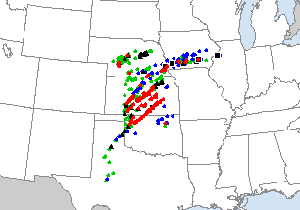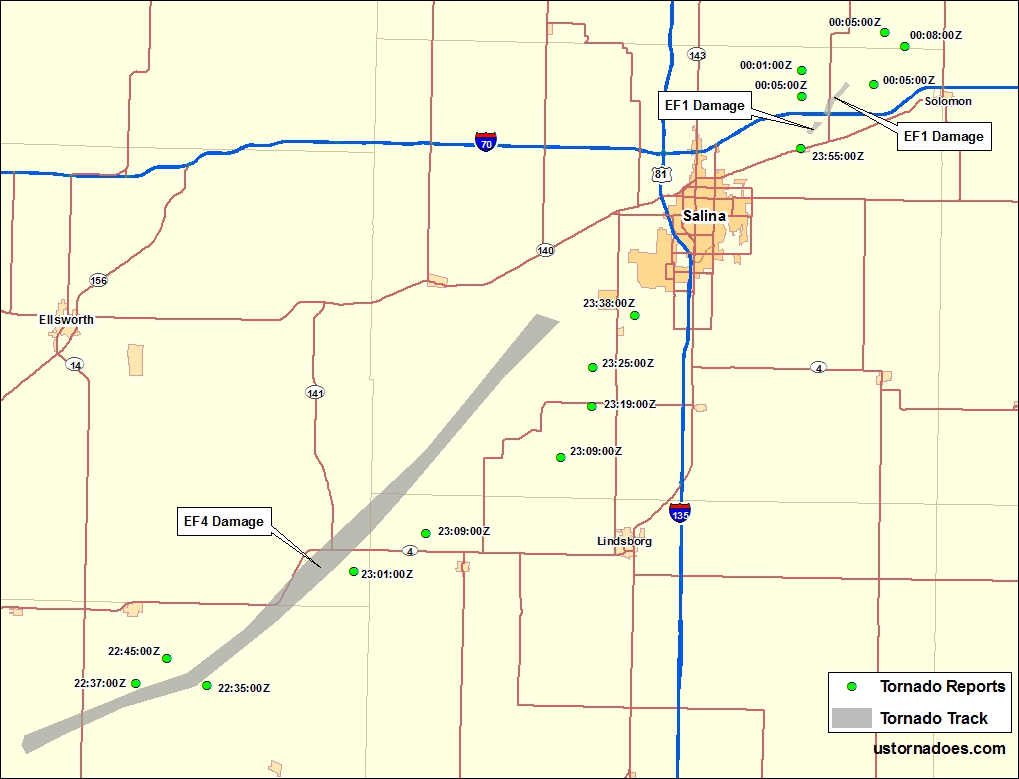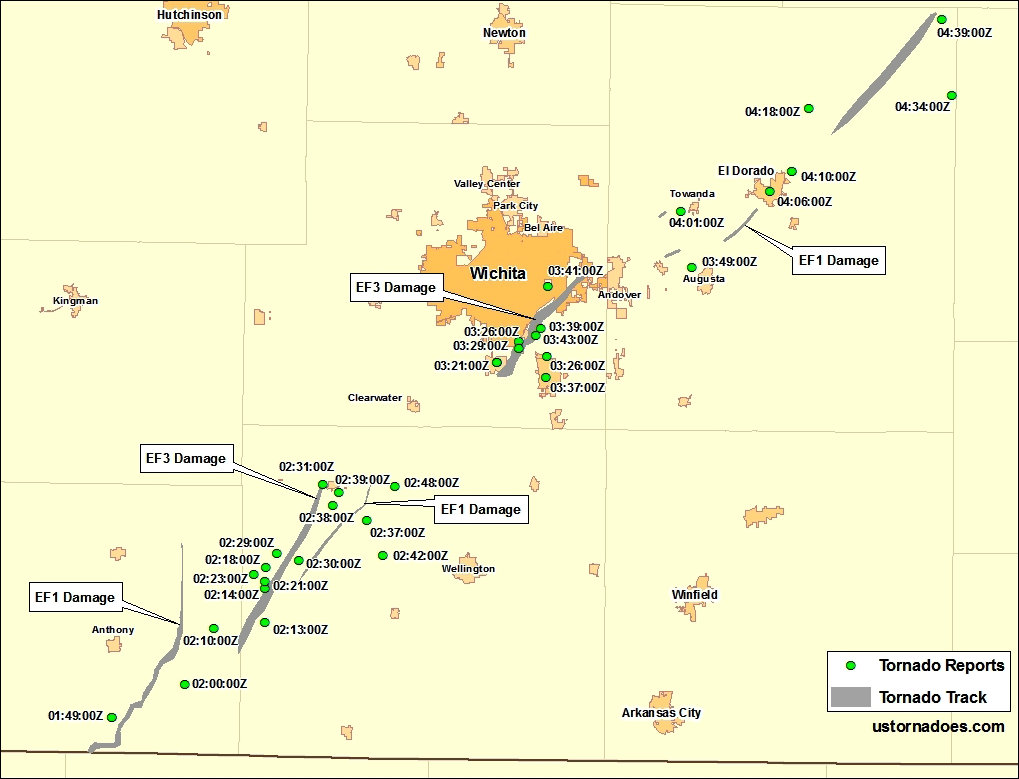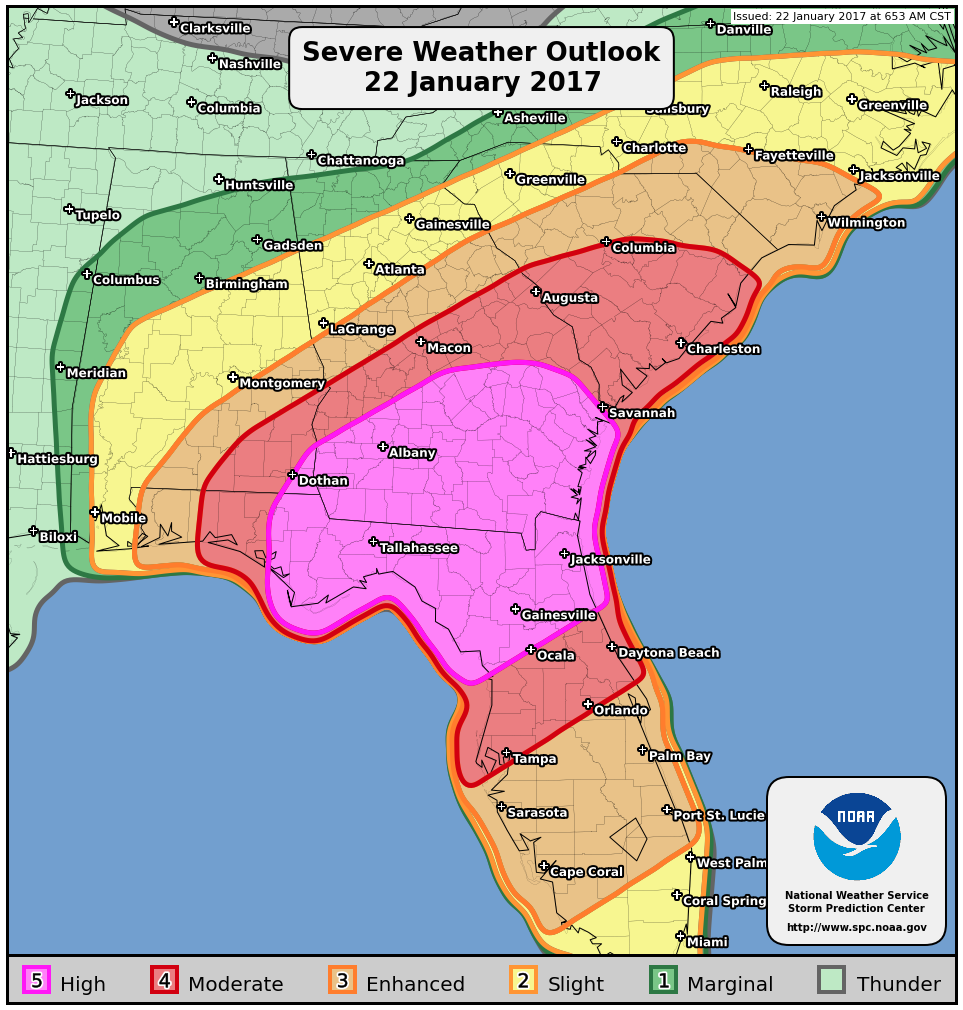
Tornado watchers know the map well. The one with red, green and blue dots all squeezed up close to each other. It’s not like it’s terribly hard to decipher either. It says “reports” seven times.
While the April 14, 2012 tornado outbreak weighed in with a formidable number of tornadoes, enough to put it in the top rung of April one-day events since 1950, far too many continue to write* or talk** about tornado reports as if they are each separate tornadoes (or in some cases, actually a tornado to begin with!).
As of recent counts, the outbreak caused at least 59 tornadoes, and perhaps as many as about 75. Signaling on the event was excellent, and warning was at least passable if also increasingly confusing — i.e., tiered warnings and/or one warning type now meaning different things depending on the office that issued it.
Most fortunately in the whole event, almost all of the tornadoes occurred in very rural areas, and there were many eyes on each storm.
This is by no means an exhaustive analysis. But, to take a quick look at the difference between a tornado report and an actual tornado, we’ve pulled out a few of the more notable long-track supercell events on April 14 to get an idea of how many times an individual tornado — or groups of tornadoes — was called in to the National Weather Service (NWS).

The one confirmed violent tornado of the day, to the southwest of Salina, Kansas, was the subject of many a video. It also received, by our count, at least nine individual raw (unfiltered) reports compiled by the Storm Prediction Center (SPC).
Almost miraculously, the supercell producing the large and dangerous tornado cycled enough for the tornado to lift as it approached Salina. Later, additional and weaker tornadoes touched down to the northeast of the city.
The latter pair of EF-1s picked up at least another six reports in the SPC log. That makes 15 reports for three tornadoes.

As nightfall approached, another tornadic supercell entered into Kansas from northwest Oklahoma. This storm produced at least eight additional tornadoes in areas nearby to, and including, Wichita.
These tornadoes that crossed the Wichita area produced well over two dozen tornado reports, or about 3-4 for each tornado, if averaged.
Granted, while dual reports are common, there are plenty of instances — particularly days with isolated activity — where the only official report equals one tornado. It’s also just as easy to imagine a situation where a long-track tornado like that to the southwest of Salina lifts and drops multiple times.
Still, as attention-grabbing a headline as 100+ tornadoes strike is, it’s wrong. This was a hefty event, though in terms of strong to violent tornadoes, and in terms of impact to humanity, it could have been much, much worse. As we’re reminded often in situations that can cause catastrophe, it only takes one.
An important part to reducing the risk of life from tornadoes is to better understand them. Within that understanding is the ability to keep events, whether large or small, in context. So, when reporting on reports, remember… they’re just reports.
While tornado reports on the SPC web site have remained stable since the maps above were created, it’s still possible they will change. The same goes for tornado tracks and/or potential additional tornadoes. The information here is presented as an example and not necessarily a final look at this event. However, we allowed enough time to pass that we feel any changes will be minimal enough overall to not impact the idea presented.
Storm report data from the Storm Prediction Center. Survey data obtained through NWS Wichita. Base map data via ESRI.
Notes…
* NYT piece written April 16, when reports were close to 100 compared to today’s 146.
**AccuWeather mentions preliminary tornado reports of 544 as tornadoes this year, while SPC specifically says not to do that on their page.
Latest posts by Ian Livingston (see all)
- Top tornado videos of 2023 - January 1, 2024
- March 31, 2023 tornado outbreak videos - March 31, 2023
- Top tornado videos of 2022 - December 31, 2022

One thought on “Tornado Reports are Reports, Not Tornadoes”